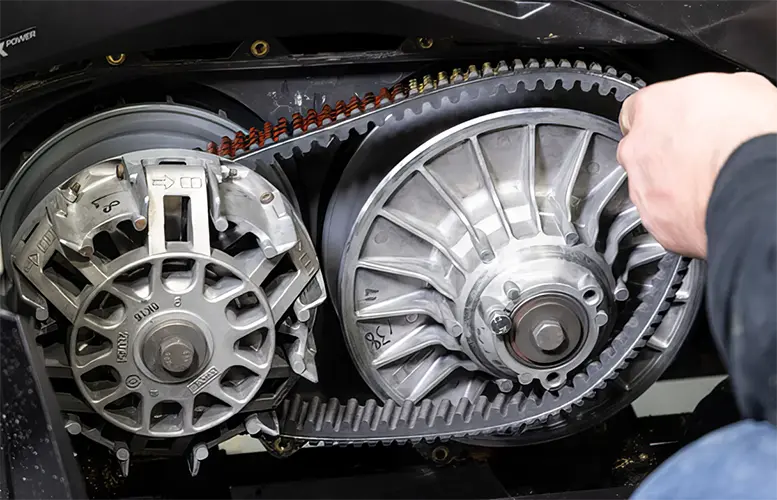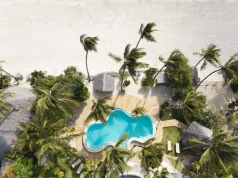
Anyone with a thirst for off-roading adventure knows just how much Can-Am has pushed the envelope with its ATVs and side-by-sides. The current Maverick R has more power than any driver can handle, pumping 240hp to all four wheels. The same level of performance, albeit in a lighter and more nimble package, is offered in the Renegade, praised as the fastest ATV in stock form.
But it’s not just outright speed. The Outlander is a fisherman’s and hunter’s favorite, offering class-leading comfort, unsurpassed towing credentials, the option of 6WD and ergonomics to stir envy in rival brands. Size up to the Commander for all-round thrills, or choose the Defender for work. All models are built around a sturdy chassis, boast some of the best ground clearance around, and ride on updated suspension to get you just about anywhere. And, they have some of the longest maintenance intervals as a testament to the high build quality and dedication that goes into each model.
Which Parts Top Can-Am Owner’s Lists?
Spec sheets don’t show the full potential of Can-Am ATVs and UTVs. The Rotax engines are not only the most powerful but also some of the most reliable, regardless of how hard they’re pushed. All can get to 5-figure mileage with regular maintenance and not complain. But it’s a common part across all ATV brands, the CV axles, that first cough up signs of wear. Can-Am is well-regarded to have some of the sturdiest axles, but there’s a limit to how much abuse they can take. Pair decent aftermarket axles with quality drive belts and a set of quality brake pads for better performance, increased safety, and parts that last longer.
Options When Replacing the Stock Axles

Overheating, metal fatigue, and loss of lubrication are some of the main reasons that cause axle binding, eventually ripping them straight off the vehicle. High torque, impact from rough riding, damage to the boots, and general wear and tear all mean you’ll be looking at aftermarket Can Am ATV axles to replace ailing front or rear units. And if you’ve been having too much fun in your Can-Am, don’t fret at the sight of a bent or snapped CV axle. Just make sure to have a replacement, so you get home safely.
Before ending up in the middle of nowhere, sure signs that axles are nearing their use-by date are clunking noises in the joints, vibrations through the bars or steering wheel, and tires or control arms laced with grease. Riders might also find it untypically harder to put vehicles into gear or do basic manoeuvres. Not something you’d want when doing 100mph in the Maverick or hauling gear to the shed.
Aftermarket Can-Am axles come as better buys, simply because there’s more material in every direction. Shafts are thicker and can take more stress and weight, boots have more heft, and there’s no skipping with the bearings. Powersport vehicle owners get to choose from different brands as well as axles tailored for different purposes.
Models geared for recreational riding, like the smaller-engined Outalnders, older Reengades or youth quads, will see more performance and for longer with standard offerings made with 5140 steel in the shafts, neoprene boots, and CV joints packed with moly grease to ensure smooth turning regardless of engine loads. There’s also more durability across different terrains, and at higher speeds, so more fun. And, the good news is they’re available for much less than OE replacements while coming with longer warranties.
When you want the most out of your off-roading machine, heavy-duty Can Am ATV axles are the better buy. They’re more in tune with the power output of the bigger-engined Outlanders and any model in the Maverick lineup and offer more durability and longer work times in the Defender and Renegade. Shafts are thicker still and made of 4340 Chromoly steel for better heat and moisture resistance and higher strength, roll on industry-grade bearings, have puncture-proof boots, and CNC-machined joints for effortless and whisper-quiet power transfer.
Get these for high-speed trial runs, serious mudding duty, taming boulders and ruts, or when you want axles that won’t buckle after hours of work on the ranch, farm or construction site.
Check the Drive Belt

Selectable gearing and driving modes are part of the fun with engines putting out 200+hp. Still, that power needs to be efficiently transmitted to axles and wheels. This is where drive belts come in. Belts sit between the drive and driven pulleys, turning thousands of times each minute while handling engine torque. And with machines that have some of the highest numbers in the business, they’d better be good.
Can-Am belts can last thousands of miles, or snap just a few minutes into your ride. If you’re harder on the throttle, reckless with the gearing, or like high-speed runs through dunes, muddy patches or water, then you’ll be pushing the drive belt to breaking point.
Not all are made the same though and compounds vary wildly. Rubber belts with trace materials like Kevlar ensure they last against high temperatures, retain shape while being bashed by clutches, and still grip pulleys to transmit power. These are what to get in higher-powered Can-Am machines. They have lower wear in the teeth, resist cracks in the cords, and have strengthened sidewalls to prevent slipping clutches. And they’ll last even when faced with water, mud, and debris. Regularly check how the belt in your quad is fairing, and get it replaced if you notice visible signs of wear.
Better Stopping Power with the Right Brake Pads
Can-Am models can get big and heavy. The Maverick weighs more than 1600 pounds, while the 6×6 Outlander nears 1200. Consider the driver and/or passengers and any gear you have on board, and you’ll be relying on quite a bit of stopping power. Thankfully, buyers get disc brakes all around, and often with a twin or triple-piston calliper setup.
The stock rotors and callipers work well even when inundated in mud or water, but it’s the pads that wear down. Recreational use will comfortably get you 2000+ miles, but if you’re harder on the throttle and like higher speeds, bringing the quad or side-by-side to a safe stop will mean you’ll be shelling out for a complete set more often.
Choose organic pads if you’re on a tighter budget and go through more sets than usual. These have decent stopping power, are generally quiet, have a good pedal and lever feel, and are easy on the discs. They’re not meant for high-powered machines though. For anything over 100hp, look to either sintered or ceramic pads.
Sintered brake pads consist of fused metal and alloys. They have the highest stopping power, the best brake feel, lower wear and should last longer in spirited riding. The downside is that they get noisy, and will eat into the rotors quickly. A good alternative is ceramic pads, as these have caught up in braking performance with sintered pads, are very quiet (good for hunters and farmers), have a good brake feel, are easy on rotors and are competitively priced.
Summing Up
Can-Am has a fantastic lineup of ATVs and side-by-sides, with models offered in different power grades, dozens of color schemes, a range of extras and features, and a long OE accessory list. All vehicles though will need regular maintenance and replacement parts like axles, drive belts and brake pads to provide more fun, thrills and capability. Choose from respected brands, parts that have been thoroughly tested and are certified, and of course, check they fit your Can-Am model.





